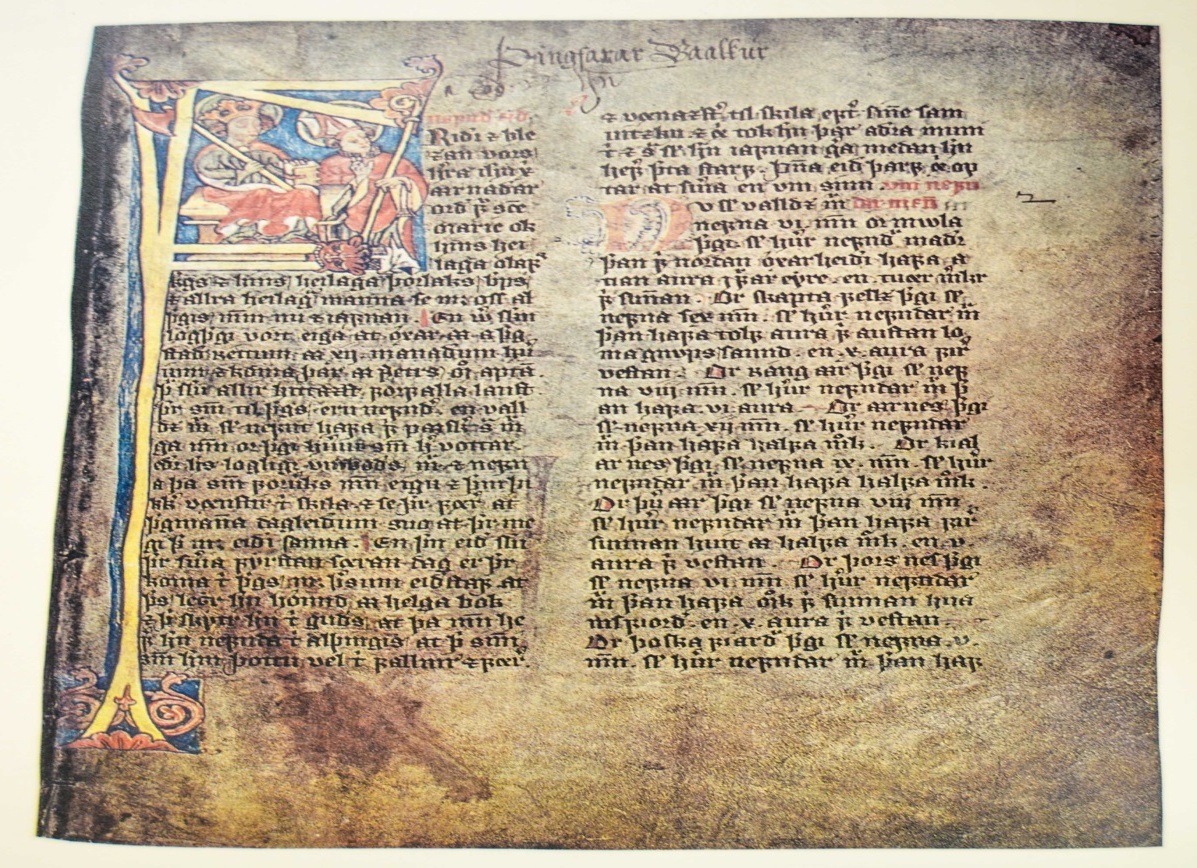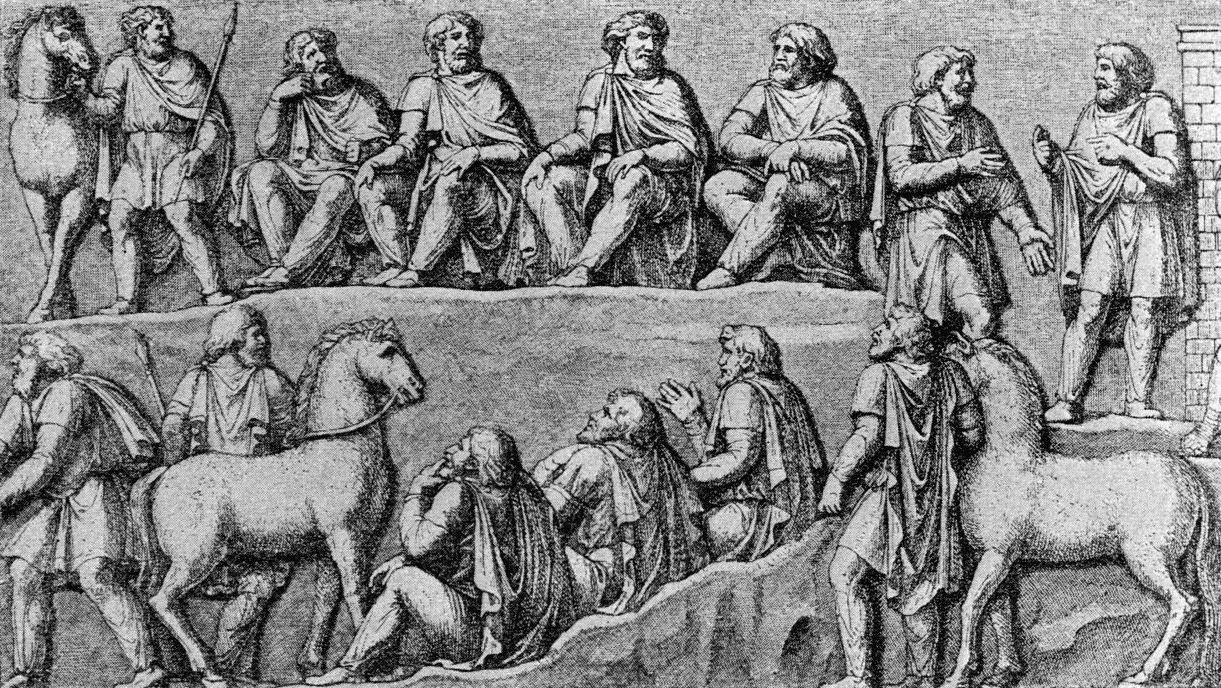|
Hreppstjóri
A hreppur () is a type of rural municipality in Iceland. These administrative units primarily consist of small rural villages, often with few or no towns, and are overseen by a . The ''hreppur'' is one of Iceland’s oldest administrative units, likely dating back to before 1000 AD, when each ''hreppur'' was required to have at least twenty freeholders. Smaller units could be established with permission from the Lögrétta. The term (from Old Norse ''hreppr'') is referenced in Icelandic legal texts such as the Gray Goose Laws (Grágás) and Law of Iceland (Jónsbók). Unlike the chieftain-þing A thing, also known as a folkmoot, assembly, tribal council, and by other names, was a governing assembly in early Germanic society, made up of the free people of the community presided over by a lawspeaker. Things took place regularly, usu ... structure, the ''hreppur'' operated independently, collecting and distributing tithes and mandatory contributions designated for the poor. ... [...More Info...] [...Related Items...] OR: [Wikipedia] [Google] [Baidu] |
Municipality
A municipality is usually a single administrative division having municipal corporation, corporate status and powers of self-government or jurisdiction as granted by national and regional laws to which it is subordinate. The term ''municipality'' may also mean the governing body of a given municipality. A municipality is a general-purpose administrative subdivision, as opposed to a special district (United States), special-purpose district. The English language, English word is derived from French language, French , which in turn derives from the Latin language, Latin , based on the word for social contract (), referring originally to the Latin communities that supplied Rome with troops in exchange for their own incorporation into the Roman state (granting Roman citizenship to the inhabitants) while permitting the communities to retain their own local governments (a limited autonomy). A municipality can be any political jurisdiction (area), jurisdiction, from a sovereign state s ... [...More Info...] [...Related Items...] OR: [Wikipedia] [Google] [Baidu] |
Iceland
Iceland is a Nordic countries, Nordic island country between the Atlantic Ocean, North Atlantic and Arctic Oceans, on the Mid-Atlantic Ridge between North America and Europe. It is culturally and politically linked with Europe and is the region's westernmost and most list of countries and dependencies by population density, sparsely populated country. Its Capital city, capital and largest city is Reykjavík, which is home to about 36% of the country's roughly 380,000 residents (excluding nearby towns/suburbs, which are separate municipalities). The official language of the country is Icelandic language, Icelandic. Iceland is on a rift between Plate tectonics, tectonic plates, and its geologic activity includes geysers and frequent Types of volcanic eruptions, volcanic eruptions. The interior consists of a volcanic plateau with sand and lava fields, mountains and glaciers, and many Glacial stream, glacial rivers flow to the sea through the Upland and lowland, lowlands. Iceland i ... [...More Info...] [...Related Items...] OR: [Wikipedia] [Google] [Baidu] |
Freehold (law)
A freehold, in common law jurisdictions or Commonwealth countries such as England and Wales, Australia, Canada, Ireland, India and the United States, is the common mode of ownership of real property, or land, and all immovable structures attached to such land. It is in contrast to a leasehold, in which the property reverts to the owner of the land after the lease period expires or otherwise lawfully terminates. For an estate to be a freehold, it must possess two qualities: immobility (property must be land or some interest issuing out of or annexed to land) and ownership of it must be forever ("of an indeterminate duration"). If the time of ownership can be fixed and determined, it cannot be a freehold. It is "An estate in land held in fee simple, fee tail or for term of life." The default position subset is the perpetual freehold, which is "an estate given to a grantee for life, and then successively to the grantee's heirs for life." England and Wales Diversity of freeholds ... [...More Info...] [...Related Items...] OR: [Wikipedia] [Google] [Baidu] |
Lögrétta
The Court of Legislature ( , "law-right") was a legislature and high court established in Iceland in the year 930 during the period of the Icelandic Commonwealth. 930 – c. 965 It was an institution of Althing, the nation's legislative and judicial authority. There was no executive power in the country at the time. After the country had been divided into four quarters around 965, four courts called quarter courts were established for each of them at Althing and thus took over the judicial responsibilities of the Court of Legislature. c. 1262 – 1563 Approximately 1015 a high court called the Fifth Court was established to hear cases left unsettled by the quarter courts. When the Commonwealth came to an end and Icelanders submitted to the authority of the Norwegian king in 1262 the Court of Legislature regained its judicial functions, as the Fifth Court and quarter courts were abolished, and retained some legislative authority. The Court of Legislature served as a high court ... [...More Info...] [...Related Items...] OR: [Wikipedia] [Google] [Baidu] |
Old Norse
Old Norse, also referred to as Old Nordic or Old Scandinavian, was a stage of development of North Germanic languages, North Germanic dialects before their final divergence into separate Nordic languages. Old Norse was spoken by inhabitants of Scandinavia and their Viking expansion, overseas settlements and chronologically coincides with the Viking Age, the Christianization of Scandinavia, and the consolidation of Scandinavian kingdoms from about the 8th to the 15th centuries. The Proto-Norse language developed into Old Norse by the 8th century, and Old Norse began to develop into the modern North Germanic languages in the mid- to late 14th century, ending the language phase known as Old Norse. These dates, however, are not precise, since written Old Norse is found well into the 15th century. Old Norse was divided into three dialects: Old West Norse (Old West Nordic, often referred to as ''Old Norse''), Old East Norse (Old East Nordic), and Old Gutnish. Old West Norse and O ... [...More Info...] [...Related Items...] OR: [Wikipedia] [Google] [Baidu] |
Gray Goose Laws
The Gray Goose Laws ( {{IPA, is, ˈkrauːˌkauːs}) are a collection of laws from the Icelandic Commonwealth period. The term ''Grágás'' was originally used in a medieval source to refer to a collection of Norwegian laws and was probably mistakenly used to describe the existing collection of Icelandic law during the sixteenth century. The Grágás laws in Iceland were presumably in use until 1262–1264 when Iceland was taken over by the Norwegian crown. Origins of Icelandic law According to Ari Thorgilsson, the earliest Icelandic laws were modeled on those from the Norwegian west-coast law-province, Gulathing. These were introduced to Iceland by an immigrant from Norway named Úlfljótr, sometime during the 920's. Following several years of modification and revision, Úlfljótr's laws were approved by an initial assembly. Out of this meeting, the annual general assembly known as the Althing was established. Each following summer, Icelanders would convene at Thingve ... [...More Info...] [...Related Items...] OR: [Wikipedia] [Google] [Baidu] |
Law Of Iceland
Law of Iceland during the Commonwealth (930–1262) was decided by the ''Alþingi'' (Althing). It has changed over the years, but the legislative body is still called the Althing. History Following the settlement of Iceland around the 870s, Iceland lacked a unitary legal system. Already around the year 930, the chiefs of the different regions of Iceland united into a single polity. A people's assembly, the ''Alþingi'', was instituted, meeting annually to exercise both judicial and legislative activities. This included having one lawspeaker (''lǫgsǫgumaðr'') on a rotating basis. His role was to know the law by heart and inform on points of law in legal cases. The first lawspeaker is said to have been Úlfljótr, who gave Iceland its first set of laws. These are thought to have corresponded closely to the Gulating laws from Norway.Nordisk rätt , ... [...More Info...] [...Related Items...] OR: [Wikipedia] [Google] [Baidu] |
þing
A thing, also known as a folkmoot, assembly, tribal council, and by other names, was a governing assembly in early Germanic society, made up of the free people of the community presided over by a lawspeaker. Things took place regularly, usually at prominent places accessible by travel. They provided legislative functions, as well as social events and trade opportunities. In modern usage, the meaning of this word in English and other languages has shifted to mean not just an assemblage of some sort but simply an object of any kind. Thingstead () or "thingstow" () is the English term for the location where a thing was held. Etymology The word appears in Old Norse, Old English, and modern Icelandic as , in Middle English (as in modern English), Old Saxon, Old Dutch, and Old Frisian as (the difference between ''þing'' and ''thing'' is purely orthographical), in German as , in Dutch and Afrikaans as , and in modern Norwegian, Danish, Swedish, Faroese, Gutnish, and No ... [...More Info...] [...Related Items...] OR: [Wikipedia] [Google] [Baidu] |
Subdivisions Of Iceland
This article shows the administrative divisions of Iceland. Constituencies Until 2003, the constituencies for the parliament elections were the same as the regions, but by an amendment to the constitution they were changed to the current six constituencies. The change was made in order to balance the weight of different districts of the country since a vote cast in the sparsely populated areas around the country would count much more than a vote cast in the Capital Region. The imbalance between districts has been reduced by the new system, but still exists. Regions There are eight regions which are primarily used for statistical purposes; the district court jurisdictions also use an older version of this division. Healthcare in Iceland is divided into 7 healthcare districts which correspond to the 8 regions of Iceland with the exception of the Northwestern Region and the Northeastern Region which are a single healthcare district. Municipalities As of 2024, the ... [...More Info...] [...Related Items...] OR: [Wikipedia] [Google] [Baidu] |

